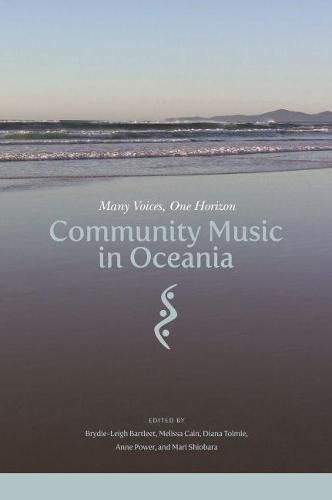Readings Newsletter
Become a Readings Member to make your shopping experience even easier.
Sign in or sign up for free!
You’re not far away from qualifying for FREE standard shipping within Australia
You’ve qualified for FREE standard shipping within Australia
The cart is loading…






Community Music in Oceania: Many Voices, One Horizon makes a distinctive contribution to the field of community music through the experiences of music education, ethnomusicology, music therapy, and music performance of the volume editors and contributors. Covering a wide range of perspectives including Australia, Timor-Leste, New Zealand, Japan, Fiji, China, Taiwan, Malaysia, Singapore, and Korea, the essays raise common themes in terms of the pedagogies and practices used, pointing collectively toward one horizon of approach. Yet, digging deeper, contrasts emerge-especially within the specifics of how community musicians fit within the musical ecosystems of their cultural contexts. These chapters discuss the maintenance and recontextualization of music traditions, the lingering impact of colonization, the growing demands for professionalization of community music, the implications of government policies, tensions between various ethnic groups within countries, and the role of institutions such as universities across the region. One of the aims of the book is to produce an intricate and illuminating picture that collectively highlights the diversity of practices, pedagogies, and research currently shaping community music in the Asia Pacific.
$9.00 standard shipping within Australia
FREE standard shipping within Australia for orders over $100.00
Express & International shipping calculated at checkout
Community Music in Oceania: Many Voices, One Horizon makes a distinctive contribution to the field of community music through the experiences of music education, ethnomusicology, music therapy, and music performance of the volume editors and contributors. Covering a wide range of perspectives including Australia, Timor-Leste, New Zealand, Japan, Fiji, China, Taiwan, Malaysia, Singapore, and Korea, the essays raise common themes in terms of the pedagogies and practices used, pointing collectively toward one horizon of approach. Yet, digging deeper, contrasts emerge-especially within the specifics of how community musicians fit within the musical ecosystems of their cultural contexts. These chapters discuss the maintenance and recontextualization of music traditions, the lingering impact of colonization, the growing demands for professionalization of community music, the implications of government policies, tensions between various ethnic groups within countries, and the role of institutions such as universities across the region. One of the aims of the book is to produce an intricate and illuminating picture that collectively highlights the diversity of practices, pedagogies, and research currently shaping community music in the Asia Pacific.